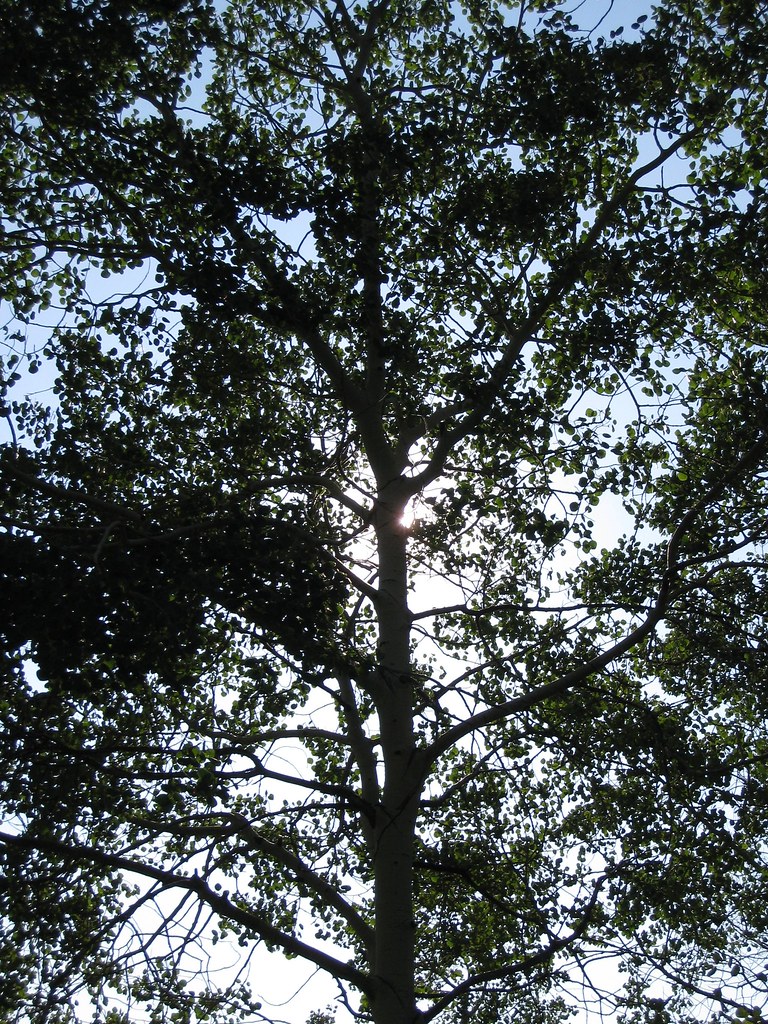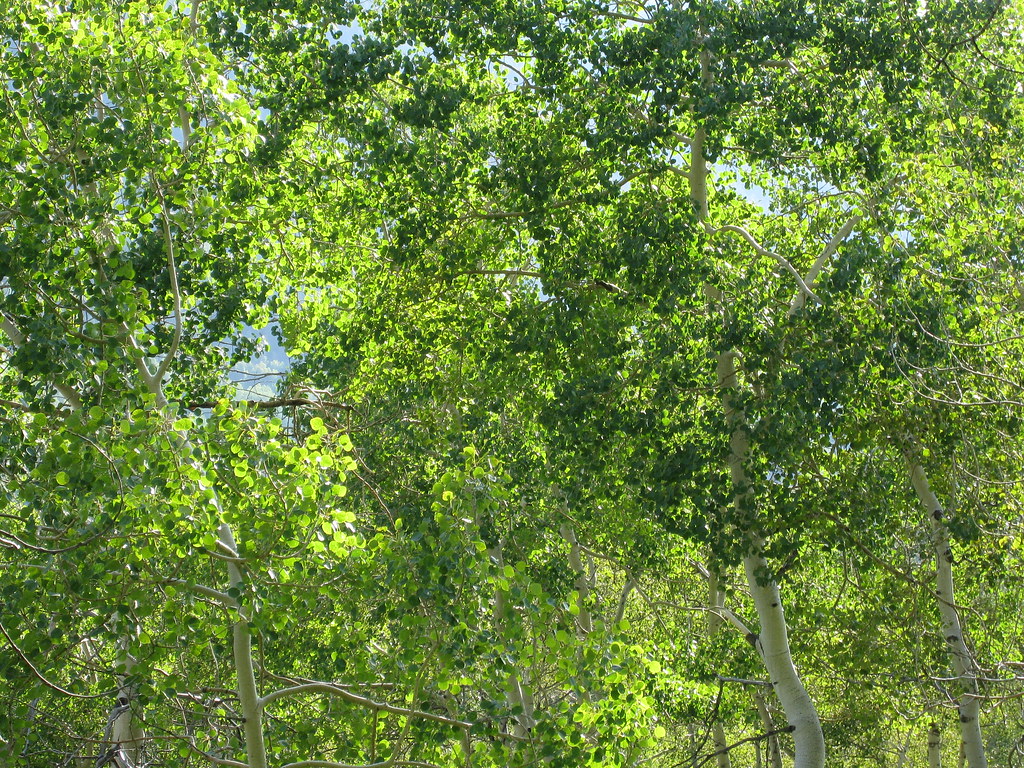I absolutely love music, but apparently I do not often respond to its performance with prescribed, socially-sanctioned behaviors. Although I have vague memories that, at least in the context of compulsory elementary school performances, I may have actually been a decent dancer and furthermore that I may have actually enjoyed dancing, I don’t dance at all. I might occasionally take the liberty of nodding my head or tapping my feet to some music, but that would most likely be in the privacy of my own home, or the false privacy of my own car. My preferred stance for watching a musical concert is to sit or stand, probably with my arms folded. Symphony or jazz performances work out pretty well for me, but moving beyond those genres I am kind of at odds with the rest of the audience.
This stoicism with regards to musical performances has given me much social trouble and internal anguish for many years (cue the sorrowful strings and/or alienating electronic soundscapes). The first time I remember being cognizant of my socially-maladaptive-live-music-behavior was at a Yes concert my friend and I went to in high school. Even at that time, I was given to understand that going to a Yes concert as a teenager in 1996 was a somewhat nerdy thing to do. And yet as it turned out, I was far too cerebral even for this crowd. Throughout the opening set, played by none other than The Alan Parsons Project, (APP, as I have just monikered them, is the 80s band famous for “Sirius,” that dramatic arpeggio synth/guitar intro that they use to announce the home team players at every Utah Jazz game ever played, that also, when played on the classic soft rock radio stations, leads directly into their proto-Radiohead/Coldplay song “Eye in the Sky,” featuring the chorus, “I am the eye in the sky / Looking at you-ooh-ooh / I can read your mind?” That’s the Alan Parsons Project, and you’d better believe I saw them do it live), this fifty-year-old drunk guy sitting next to me was absolutely spazzing out, dancing, yelling, and swinging his arms all over the place. He inadvertently hit me a few times, and every time he did this and saw that I didn’t really appreciate it I received remonstrations from him and his wife for just standing there and not dancing or being more excited. Apparently I was not simply allowed to freak out and have a seizure over The Alan Parsons Project as they performed their opening set, but I was expected to do so. Also, apparently I’ve never enjoyed life.
Fast forward through the years, and I’ve only gotten worse in regards to correct concert behavior. A year or so after that Yes concert I saw Pearl Jam play a huge benefit concert at High School Memorial Stadium in their home town of Seattle. Pretty cool, right? I haven’t told you how at this General Admission concert, with plenty of room everywhere, I was sitting far, far away from the stage up in the bleachers of the stadium. Also I have not disclosed that I was sitting next to my parents in those faraway seats; they came not for even the slightest love of Pearl Jam or rock music, but because while on family vacation they wouldn’t let me go to a concert by myself in a strange town. Not wanting to destroy my hopes of seeing my favorite band (at the time) perform, they insisted on coming with me and were extremely nice in their paranoid over-protection. To be honest, though, I’m not sure if my behavior at that concert would have been any different had I been there by myself. I may have wandered around the stadium a bit more, but I’m not sure if I would have dared descend to the field in front of the stage where all the action was, among all the people who really “loved the music.” The concert was alright. The sound was tinny, I could barely see the band, and Eddie embarrassed me by swearing a whole bunch in front of my parents, which was kind of lame.
Since then, I have pretty much never gone to concerts. Like I said, I do love music. I have daydreamed and conjectured as to how certain songs or bands sound when played live. I’m curious to see how people manipulate their instruments, and how their voices sound live. I even made this list about a year ago, after finally going to see one of my favorite bands (Broken Social Scene) perform live at a free concert.
But when artists whose records I have pined over for years roll into town, I suddenly find that I am not that interested in going. I fear that they may not live up to my expectations. I don’t have anyone to go with, or I don’t know where the venue is, or I am afraid I won’t know how to navigate all the weird private club business in Utah because I never do it otherwise, or I won’t act appropriately. I won’t dance when I’m supposed to dance. I won’t be wearing the right clothes. I’ll be too old, or too young. I won’t be drunk. I won’t be screaming at the top of my lungs. I generally just won’t fit in with the theoretical crowd of my imaginings. I can think of tons and tons of reasons why I might be uncomfortable and not enjoy the concert, and these worries combine to ruin whatever positive experience I might have listening to the music and watching the musicians.
A case in point would be the aforementioned Broken Social Scene concert. They performed an outdoor concert at the Gallivan Center in Salt Lake City, part of the city’s free summer concert series. For years I had wanted to see BSS live. From what I had read in a couple of interviews and reviews of their concerts, I had intuited that certain songs that on their records featured inscrutable vocals buried low in the mix, or that had been otherwise remixed and deconstructed into oblivion, would be recast as dynamic rockers when played live. On this count my intuitions were correct: the Scene contrast their occasional “shyness” on tape with a robust, celebratory, collective performance. They interact with the crowd, they are good showmen, they have great energy and a strong collection of songs, and musically they have a looseness and a swagger, operating practically like a jam band without the long, tepid noodling. In other words, they are a great rock group.
But the crowd ultimately kind of ruined the concert experience. Before the concert started the people around seemed like good enough folks. There were people who looked to be regulars of the concert series, younger and middle aged couples, a few young families. Hanging around in front of the stage there were a lot of kids who may or may not have been hipsters, I really can’t say, but many were the type of kids that I imagine as filling up a Kilby Court concert (I’ve never actually been to one) and making me feel not very cool, clothed in what I intuited were the latest anti-styles (in this case a year ago it was v-neck t-shirts and tight girls jeans for the guys, unflattering retro-styled dresses for the girls). These were the types of people one would expect to see viewing and enjoying this concert, and that’s great. However, as the concert progressed we stayed in the same spot but everyone who had been around at the start of the concert seemed to have disappeared. In their stead were seething masses of high school kids that seemed to be there just to hang out and didn’t really care about the band or the music at all. It was mystifying to me how quickly the concert mutated into a high school stomp. There were tons of kids up in the front moshing and crowd surfing. There were lots of thuggish kids moving through the crowds, oblivious to what was going on onstage. These guys in front of us took their shirts off and performed dances that looked like aerobics routines, and random girls just came up and danced with them. Where did they all come from and why were they there?
I enjoyed that concert, but over the subsequent months the memory of the crowd has worked on me to the point that I am afraid to go to a concert again. When this year’s Gallivan Center concert lineup was announced, it included several of my current favorite musical artists, including Sonic Youth, who you may notice are prominently included on the above list I composed one year ago. Would all those kids show up and try to push Sonic Youth into playing punk-pop like they were part of the Vans Warped Tour? (Not that Sonic Youth would cede to such a push; that may have been an interesting confrontational concert to watch.) Would they try to crowdsurf to M. Ward’s easygoing folk-rock singer/songwriter stylings? I was afraid to even find out. Because of a busy schedule, but mostly out of fear of a negative experience, I didn’t go to any of these concerts this year; not even my favorite Sonic Youth. Chicken.
* * *
Last Friday evening I walked out into the backyard of my in-laws house, just to feel the cool, rainy air for a minute. After standing out there for a second, I noticed music emanating from somewhere in the neighborhood. It sounded very much like live, amplified music. This was intriguing to me, as my in-laws home is nestled in the middle of a suburban neighborhood, nowhere near any place that would be considered a concert venue. Furthermore, it seemed to be trying to rain, not necessarily the ideal condition for an outdoor performance. Curious, I walked to the front of the house to look for any indications of what was going on. I walked down the street, towards the source of the sounds. The cars parked up and down the street convinced me that it was definitely a party, but I still wasn’t entirely positive that they weren’t just blasting a CD out over a great sound system, because the music was spot-on. As you’ve probably determined by now, I’m not much of a partier, so I just walked around the block for a minute, listening to a really tight country-funk-southern rock groove and the sounds of someone absolutely killing on the electric fiddle floating around the neighborhood. There was no questioning at this point that it was a live band. The only question was, who the heck was this band and why were they playing someone’s backyard party in Holladay?
I went back to my in-laws’ house and found Gin, and asked her to come on a walk with me to see what she thought of the music and to see if she by chance would be able to figure out who these people were and what was going on. As we reached the house, she, being much more socially brave and nonchalant than I, pulled me along and we followed some guy through the garage of the party house and out onto a balcony deck, where we found ourselves overlooking a giant pool party and backyard filled with people of all ages. The band was set up beneath the balcony right by the side of the pool, and an advertising slideshow on a TV set up next to their equipment informed us that they referred to themselves as Bonepony. This seemed a familiar-sounding name for some reason.
So we stood up there on the deck and watched them for a few minutes. This was the first time I had ever crashed a party. At first I kept expecting someone to come and ask us who we were and be irritated at our presence, but the whole thing was very casual. Nobody paid us any mind. There were people playing around in the pool, some of them dancing to the music. There were people sitting in lawn chairs, watching the band. There were people standing in groups talking and drinking beers. I actually saw a guy come up to a woman and say “Do you come here often?” and he wasn’t joking. At one point, the singer invited all the neighbors to come over, rather than call the cops.
Thinking about this house party concert, it is totally illogical to me that at this gig, which looked to be very much a party, rather than a concert, it was easy to just watch and enjoy the music without ridiculous distractions from other crowd members, and without any social pressure to get rowdy. The crowd was not pushing one way or the other; everyone was able to do their own thing and enjoy the experience in their own way. In contrast, many crowd members at several of the concerts I have attended attempt to hijack the concert and turn it into some wild party. I guess what those great men once said is true, “You’ve got to fight for your right to party,” even at a rock concert. I guess it turns out that while I look at a concert as an opportunity to hear and watch some music performed, many people take a concert as nothing more than an opportunity to dance, drink, goof around, grope somebody, whatever. The music and musicians that may be playing are simply incidental to the main purpose: to act like an ass. It turns out you can party to the Alan Parsons Project if you are loaded enough. You can mosh or get crunk to Canadian indie rock collectives. I suppose you can party to Sonic Youth or M. Ward. I guess while you’re doing all of that, I can stay home and listen to my records.
[The title of this post comes from “Do the Standing Still,” an entirely appropriate song that the Dismemberment Plan were nice enough to write about me. Listen to it below. At one time, the Dismemberment Plan were my favorite band, but sadly, if nonetheless inevitably, their plan came to completion, and they no longer exist. It must be noted that one of my most regretted concert misses ever was their Death and Dismemberment Tour with Death Cab for Cutie, which happened before the Plan broke up and before Death Cab became kind of like a big deal. This song comes from the Plan’s second album, The Dismemberment Plan Are Terrified. I think that album’s kind of hit and miss, but their third and fourth albums, 1999’s Emergency & I and 2001’s Change are stone cold classics of post-emo indie rock hipster geekery. They are sorely missed.]








 Rebelling against the structure and strictures of the traditional coming-of-age novel (with the very first sentence the narrator informs us that he’s not going to go into “all that David Copperfield kind of crap,”) this book instead gives us an unfiltered, uncensored and un-“adult”-erated flash into the life and brain of teenager Holden Caulfield as he wanders around New York City for a couple of days and nights after being kicked out of yet another prep school, not ready to go home and face his parents. There is no epic adventure or crisis, we are simply pulled in by Holden’s hilarious, confessional narration, which from page to page is obnoxious, insightful, vulgar, sensitive, spazzy, intelligent, depressed, distracted and empathetic. Above all, Holden seems to be in search of integrity both in himself and in the world at large; he constantly rails against “phoniness” wherever he sees it. Salinger captures adolescent confusion and detachment like no one before probably ever had; we are right with Holden as he wrestles with his confusion over love, sex and the hypocrisy and evil of the world. Rather than showing us the boy growing into a man, we are thrust into a very vivid moment right in midst of the “growth,” and are left to conjecture what will ultimately become of our narrator.
Rebelling against the structure and strictures of the traditional coming-of-age novel (with the very first sentence the narrator informs us that he’s not going to go into “all that David Copperfield kind of crap,”) this book instead gives us an unfiltered, uncensored and un-“adult”-erated flash into the life and brain of teenager Holden Caulfield as he wanders around New York City for a couple of days and nights after being kicked out of yet another prep school, not ready to go home and face his parents. There is no epic adventure or crisis, we are simply pulled in by Holden’s hilarious, confessional narration, which from page to page is obnoxious, insightful, vulgar, sensitive, spazzy, intelligent, depressed, distracted and empathetic. Above all, Holden seems to be in search of integrity both in himself and in the world at large; he constantly rails against “phoniness” wherever he sees it. Salinger captures adolescent confusion and detachment like no one before probably ever had; we are right with Holden as he wrestles with his confusion over love, sex and the hypocrisy and evil of the world. Rather than showing us the boy growing into a man, we are thrust into a very vivid moment right in midst of the “growth,” and are left to conjecture what will ultimately become of our narrator. Marcelo is looking forward to his coming summer job as caretaker of the therapy ponies at Paterson, a special school for children with disabilities which he himself has attended for years. He is an intelligent but sheltered teenager with a condition that places him on the Autism spectrum. However, Marcelo’s father, wanting him to gain experience in the “real world,” pushes him into a job in the mail room of his Boston corporate law firm. If he isn’t successful at the mailroom job and at following what his father terms “the rules of the real world,” he will be required to go to a regular high school for his senior year rather than his beloved Paterson. And so the reader is thrust with Marcelo into the competitive, confusing and relativistic world of the law firm, viewing it all through his fresh eyes.
Marcelo is looking forward to his coming summer job as caretaker of the therapy ponies at Paterson, a special school for children with disabilities which he himself has attended for years. He is an intelligent but sheltered teenager with a condition that places him on the Autism spectrum. However, Marcelo’s father, wanting him to gain experience in the “real world,” pushes him into a job in the mail room of his Boston corporate law firm. If he isn’t successful at the mailroom job and at following what his father terms “the rules of the real world,” he will be required to go to a regular high school for his senior year rather than his beloved Paterson. And so the reader is thrust with Marcelo into the competitive, confusing and relativistic world of the law firm, viewing it all through his fresh eyes.